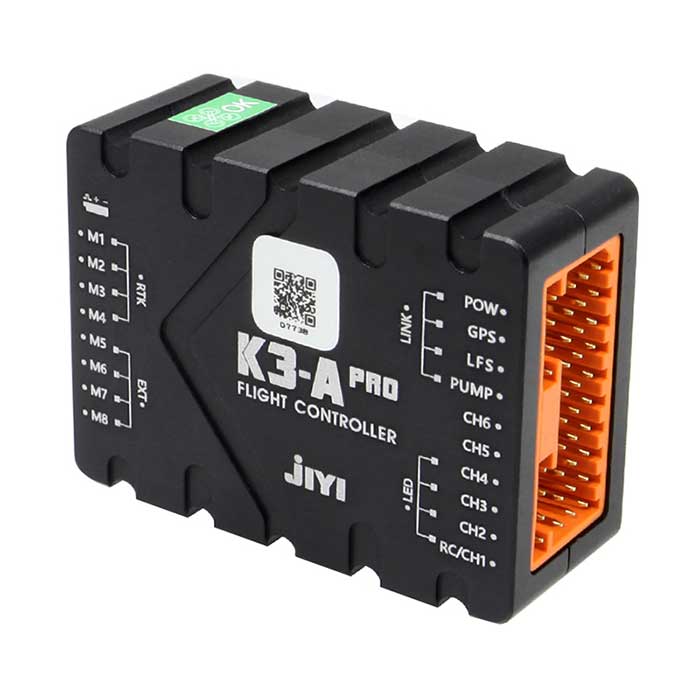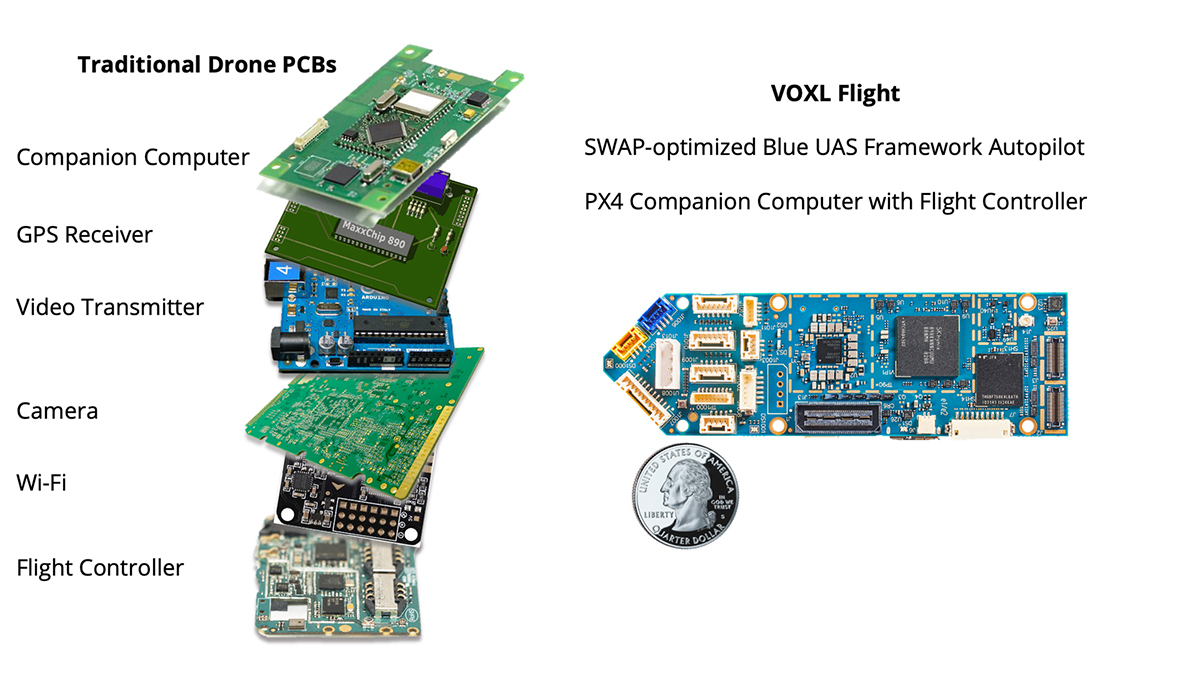SparkNavi Drone Flight Controller and GNSS/INS Made in Taiwan: Development for Expert UAVs
SparkNavi Drone Flight Controller and GNSS/INS Made in Taiwan: Development for Expert UAVs
Blog Article
Exploring the Function of Drone Trip Controllers in Enhancing Flight Stability and Navigation Effectiveness
The development of drone modern technology has dramatically enhanced the importance of flight controllers, which function as the mind of these aerial vehicles. By integrating real-time data from a range of sensing units, trip controllers improve flight stability and navigation performance, ensuring that drones can operate smoothly even in intricate settings. This conversation will explore the crucial elements that contribute to these improvements, in addition to the ramifications for the future of independent trip. What innovations lie in advance that could better change the capacities of drone trip controllers?

Understanding Flight Controllers
Flight controllers are important components in the functioning of drones, working as the brains that maintain and take care of flight operations. These sophisticated devices process data from various sensors, including accelerometers, gyroscopes, and GPS, to make sure that the drone preserves its designated flight path. The flight controller interprets this data and performs commands based on pre-defined algorithms, enabling the drone to react to ecological changes, such as wind or barriers.
The key feature of a trip controller is to preserve stability during flight. It achieves this by making real-time modifications to the drone's electric motors and control surfaces, guaranteeing balance and control. In addition, contemporary flight controllers include sophisticated features such as waypoint navigating, enabling automated trip courses and boosted operational efficiency.
Understanding the style of trip controllers is essential for both professionals and enthusiasts. They commonly contain a microcontroller, firmware, and various interfaces for sensing unit input and interaction. As technology advances, trip controllers have ended up being more capable and small, incorporating synthetic knowledge to enhance decision-making processes and adapt to intricate trip situations. This development signifies a crucial advancement in the drone sector, leading the way for more advanced applications and more secure operations.
Trick Components of Trip Stability
Accomplishing ideal trip security in drones relies on several key components that operate in concert to ensure regulated and smooth procedures. Central to this security is the trip controller itself, which refines data from different sensors to maintain the wanted trip perspective. This consists of accelerometers and gyroscopes that gauge movement and orientation, enabling real-time changes to the drone's setting.
One more critical part is the digital rate controllers (ESCs), which control the power provided to the motors. By carefully adjusting motor speeds in reaction to flight controller commands, ESCs assist preserve balance and neutralize disturbances caused by wind or sudden motions.
In addition, the layout of the drone's structure plays a critical role in flight stability. A well-structured framework decreases resonances and boosts the general aerodynamic profile, adding to smoother trip qualities. The assimilation of sophisticated algorithms within the trip controller help in predictive adjustments, ensuring a versatile and receptive flight experience.
With each other, these elements form a natural system that enhances a drone's security, enabling exact handling and enhanced performance in different flight problems.
Navigating Efficiency Methods
Efficiency in navigation is vital for enhancing drone operations, especially in complicated environments. Efficient navigation techniques enhance the capability of drones to pass through challenging surfaces and stay clear of obstacles, thereby enhancing functional efficiency and safety and security.
One prominent technique is the execution of sophisticated GPS and inertial measurement devices (IMUs) that supply specific area monitoring and alignment data. These technologies enable drones to compute ideal flight courses in real-time, considering numerous variables such as wind problems and possible barriers.
An additional strategy involves making use of algorithms for path preparation and optimization. Algorithms such as A * and Dijkstra's algorithm can be released to identify the most reliable course while decreasing energy usage and flight time. Incorporating maker knowing versions can allow drones to adaptively discover from their environments, improving navigation capabilities with experience.

Influence On Autonomous Drones
The integration of innovative navigation strategies has greatly changed the capabilities of autonomous drones, enabling them to run with higher autonomy and accuracy. SparkNavi drone flight controller and GNSS/INS made in taiwan. These improvements are primarily connected to advanced flight go to this site controllers that make use of real-time information handling and sensor fusion, permitting drones to navigate complex atmospheres flawlessly
The effect on autonomous drones extends beyond plain navigating; it incorporates enhanced barrier avoidance, boosted security throughout vibrant conditions, and enhanced objective integrity. By leveraging algorithms that incorporate artificial intelligence and artificial intelligence, drones can adjust to altering circumstances, making informed choices that maximize their flight paths while lessening risks.
In addition, the implementation of durable trip controllers has assisted in the implementation of intricate tasks, such as airborne inspections, shipment services, and agricultural tracking, with minimal human treatment. This capability not just enhances operations yet additionally minimizes human error, therefore enhancing general safety.
Because of this, the operational extent of independent drones has broadened considerably, making them important tools in various sectors. Their capability to execute efficiently in diverse situations underscores the important function that advanced flight controllers play in shaping the future of unmanned airborne systems.
Future Fads in Trip Control
Often, innovations in trip control technology are poised to redefine the landscape of drone procedures in the coming years. Emerging patterns suggest a significant change towards enhanced fabricated knowledge (AI) integration, making it possible for flight controllers to process real-time information more effectively. This evolution will facilitate improved decision-making abilities, allowing drones to adapt to vibrant environmental problems autonomously.
Moreover, the application of artificial intelligence formulas is anticipated to boost anticipating upkeep, therefore minimizing downtime and expanding the lifecycle of drone parts. This aggressive strategy to upkeep will certainly be essential as drone applications broaden throughout various sectors, from farming to logistics.

.jpg)
Lastly, improvements in safe and secure communication methods will certainly deal with safety and security and regulative problems, ensuring that drones can run flawlessly in congested airspaces (SparkNavi drone flight controller and GNSS/INS made in taiwan). Collectively, these fads direct in the direction of a future where flight control systems are not only smarter and much more likewise qualified however reliable of running safely in an increasingly integrated airspace
Final Thought
In final thought, drone trip controllers are indispensable to enhancing flight security and navigating performance with the innovative handling of sensor data. By maintaining ideal flight perspectives and using sophisticated formulas for path optimization and barrier avoidance, these controllers significantly add to the freedom and functional safety and security of drones. As technology continues to evolve, additionally innovations in flight control systems are prepared for, assuring enhanced performance and increased abilities in the realm of unmanned aerial automobiles.
By integrating real-time information from an array of sensing units, flight controllers boost trip stability and navigation performance, ensuring that drones can operate efficiently even in intricate environments.Trip controllers are important elements in the performance of drones, serving as the brains that handle and maintain trip operations. Furthermore, modern-day trip controllers incorporate innovative features such as waypoint navigating, enabling for automated trip courses and enhanced operational performance.
Central to continue reading this this security is the flight controller itself, which refines data from different sensors to preserve the wanted trip mindset.In verdict, go to this website drone flight controllers are important to boosting trip security and navigating efficiency through the sophisticated processing of sensing unit information.
Report this page